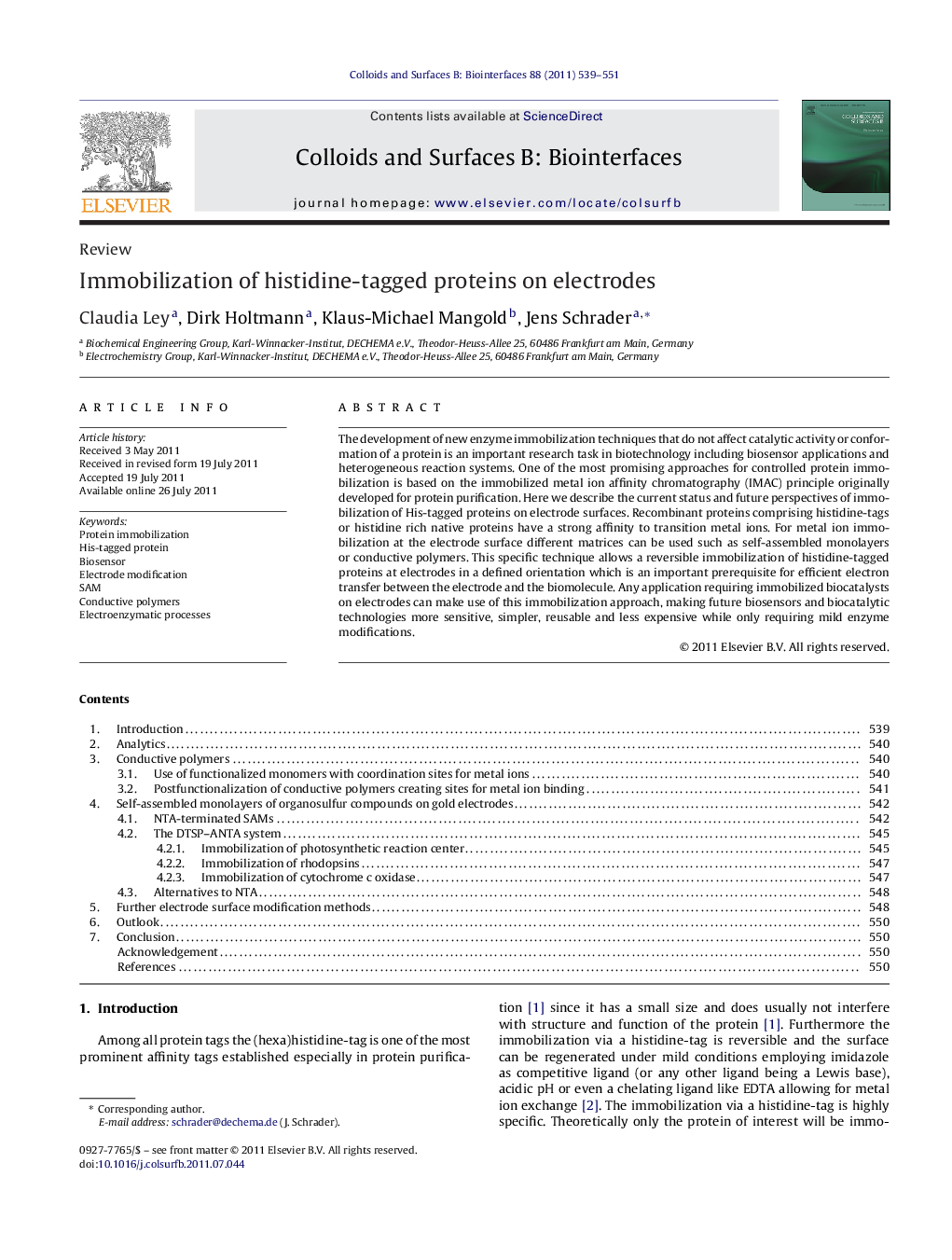| Article ID | Journal | Published Year | Pages | File Type |
|---|---|---|---|---|
| 601094 | Colloids and Surfaces B: Biointerfaces | 2011 | 13 Pages |
The development of new enzyme immobilization techniques that do not affect catalytic activity or conformation of a protein is an important research task in biotechnology including biosensor applications and heterogeneous reaction systems. One of the most promising approaches for controlled protein immobilization is based on the immobilized metal ion affinity chromatography (IMAC) principle originally developed for protein purification. Here we describe the current status and future perspectives of immobilization of His-tagged proteins on electrode surfaces. Recombinant proteins comprising histidine-tags or histidine rich native proteins have a strong affinity to transition metal ions. For metal ion immobilization at the electrode surface different matrices can be used such as self-assembled monolayers or conductive polymers. This specific technique allows a reversible immobilization of histidine-tagged proteins at electrodes in a defined orientation which is an important prerequisite for efficient electron transfer between the electrode and the biomolecule. Any application requiring immobilized biocatalysts on electrodes can make use of this immobilization approach, making future biosensors and biocatalytic technologies more sensitive, simpler, reusable and less expensive while only requiring mild enzyme modifications.
Graphical abstractFigure optionsDownload full-size imageDownload as PowerPoint slideHighlights► His-tagged proteins can be immobilized reversibly on electrodes making use of the IMAC (immobilized metal ion affinity chromatography) principle. ► Metal binding sites are created by modifying the electrode surface with conductive polymers or self-assembled monolayers. ► Electrical communication between the electrode and the immobilized biomolecule has been shown by several authors and is summarized here. ► This review describes the current status and future perspectives of the immobilization of His-tagged biomolecules on electrodes.
